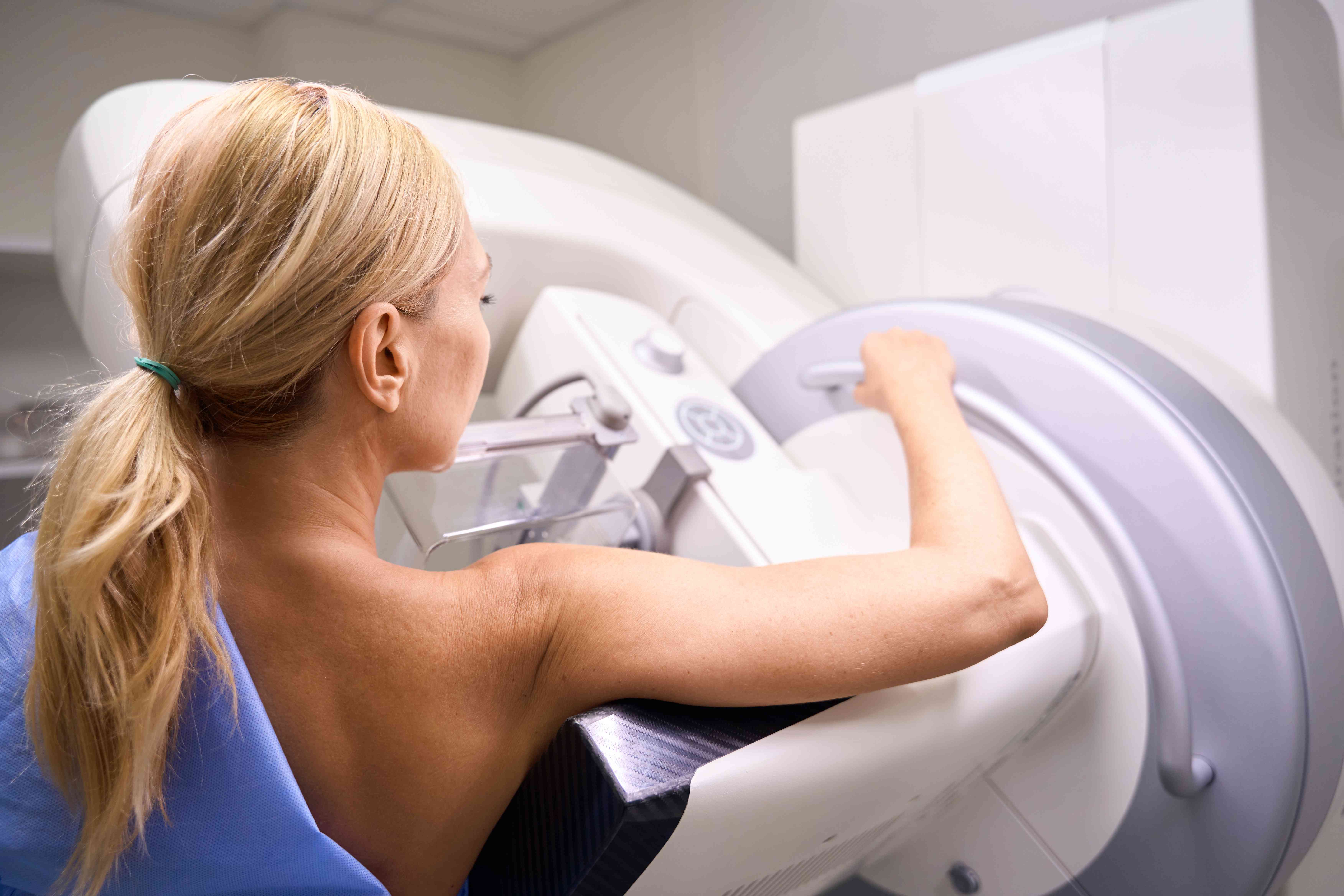More Younger Women Are Being Diagnosed With Breast Cancer—Here's What You Can Do to Try to Catch It Early Experts say the report highlights the need for young women to know the symptoms of breast cancer

A new report found breast cancer cases in women under 50 are increasing twice as fast as cases in women over 50
- Breast cancer cases in women under 50 are rising twice as fast as cases in women over 50, a new report found.
- The study said increases in risk factors like excessive weight, physical inactivity, and heavy alcohol use may be to blame.
- Experts advise women under 50 to be aware of their family history of breast cancer and monitor for symptoms, including lumps, breast pain, and nipple discharge.
Breast cancer cases in women under 50 are rising, a new study by the American Cancer Society has found.
The study published last week in CA: A Cancer Journal for Clinicians details the state of breast cancer diagnoses and mortality in the U.S. over the past decade.
While the overall death rate from breast cancer has dropped 44% since its peak in 1989, researchers found that the number of diagnoses rose by about 1% annually between 2012 and 2021. The incidence rate for women younger than 50 was even higher, at 1.4%, versus 0.7% for women over 50.
Asian American and Pacific Islander women had the fastest increase among all ages, with rates rising by more than 2% in each group, the study revealed.
Experts said the findings highlight the need for younger women to be aware of their risk of breast cancer, as well as for interventions that reduce racial disparities in breast cancer care.
“The report underscores what many of us in oncology have observed in our clinical practices for years: Early-onset cancers are on the rise,” Tiffany Onger, MD, a medical oncologist at Cleveland Clinic, told Health. “We’ve already seen this with colon cancer, prompting changes in screening guidelines, and now we’re witnessing a similar shift with breast cancer.”

A Closer Look at Rising Rates
By age 50, one in 50 women in the U.S. will develop invasive breast cancer, the most common type, the study authors reported.
While the study found that breast cancer cases are rising twice as high in women younger than 50, the rate for people in their twenties increased the sharpest, at 2.2%.
Experts believe several factors are to blame for rising cases in younger women. “These increases are likely due to changing risk factors across the population, such as increasing excessive weight and declines in fertility, especially among younger generations,” Angela Giaquinto, MSPH, a researcher at the American Cancer Society (ACS) and leading author of the new study, told Health. “Increased sedentary lifestyle may also contribute, as 7% of breast cancers are attributed to physical inactivity.”
Drinking also plays a role: “Alcohol consumption accounts for 16% of cases and has been increasing, especially heavy drinking, in women in their thirties and forties,” Giaquinto explained.
The research also showed persisting racial and ethnic disparities regarding breast cancer case and mortality rates among young people.
Between 2017 and 2021, Black, Hispanic, Asian American, and Pacific Islander women were more likely to be diagnosed between the ages of 20 to 59 than white women. Among those younger than 50 with breast cancer, Black women were more likely to die of the disease than any other group.
Overall, the death rate in Black women is 38% higher than in white women despite a 5% lower incidence, with the disparity starkest among the 20 to 29 age bracket.
“Native American women, who’ve had no decline in mortality for decades, are 6% more likely to die than white women while being 10% less likely to be diagnosed," Giaquinto said.
The authors pointed to "improved clinical trial representation and access to high-quality screening and treatment" as ways to mitigate racial, ethnic, and social disparities in breast cancer incidence and mortality.
Your Mammogram Results Revealed You Have Dense Breasts—Now What?What Younger Women Can Do to Help Catch Breast Cancer Early
In the U.S., mammograms are recommended annually for people aged 40 to 74 at average risk of breast cancer. As such, the study highlights the importance of breast cancer education for women who aren’t yet eligible for screenings.
One factor women should take into consideration is whether they have a family history of breast cancer, and if so, discuss this with their doctor. “Although current guidelines recommend breast cancer screening starting at age 40 for the general population, some women may benefit from earlier screening based on their family history,” Onger said. “A thorough review of family medical history may indicate heightened risk, warranting earlier mammograms or additional screening methods.”
Knowing what breast cancer looks like is also hugely important, experts pointed out.
“Regardless of age, it is crucial for women to be familiar with how their breasts normally feel,” Onger said. “Any persistent changes lasting more than two weeks should be evaluated by a healthcare provider.”
The most common symptom of breast cancer, according to Giaquinto, is “a painless lump in the breast or underarm lymph nodes.” But, she added, women should also watch for the following:
- Breast pain
- Breast heaviness
- Swelling
- Thickening
- Dimpling
- Redness
- Nipple changes
- Nipple discharge
When women know what breast cancer looks like, they can speak to their providers sooner—and this may positively impact their outcomes. “Any persistent change in the breast should be evaluated by a physician, no matter how young you are,” Giaquinto said. “Cancer increasingly affects younger people.”
This story originally appeared on: Health News - Author:Maggie O'Neill


















